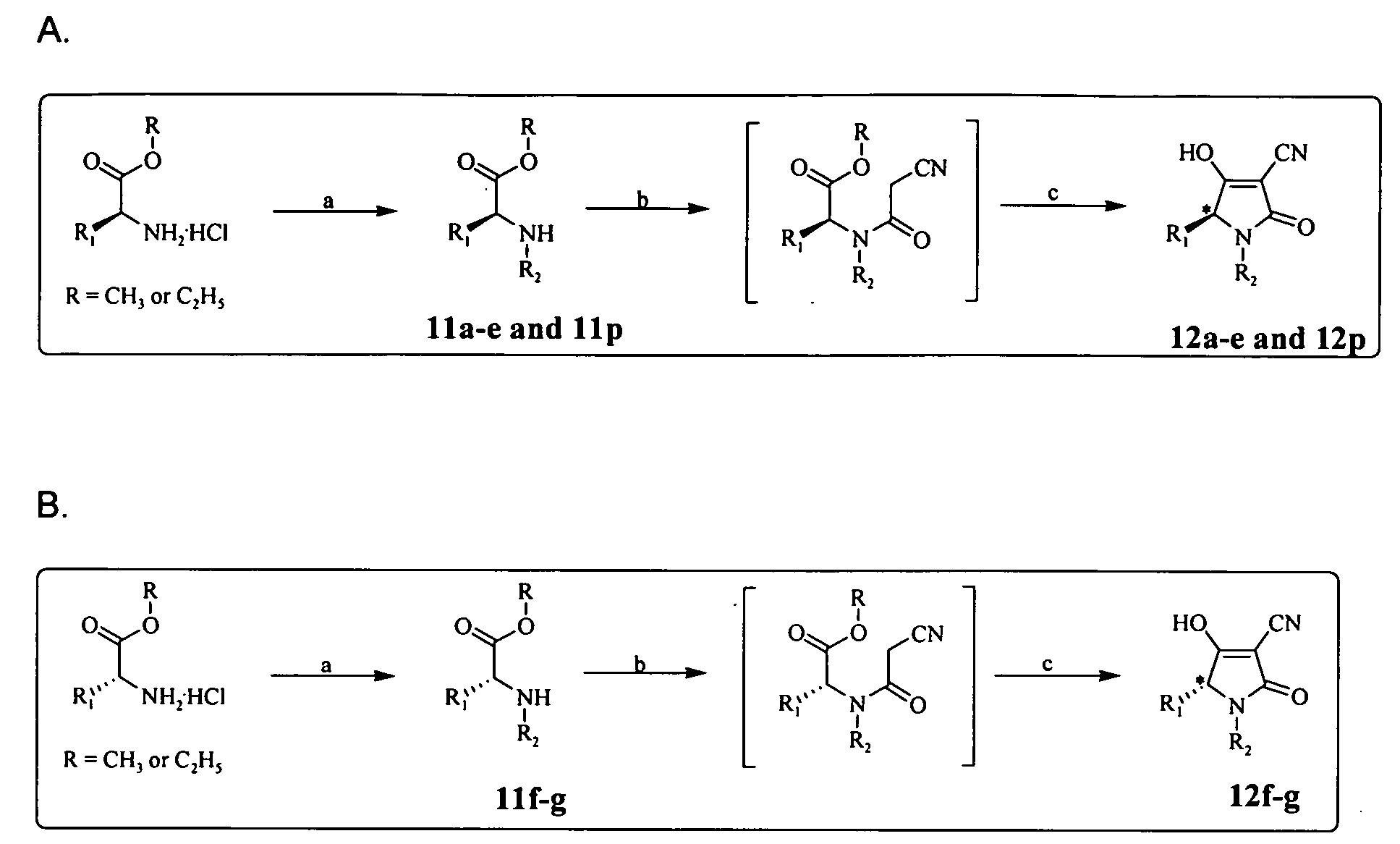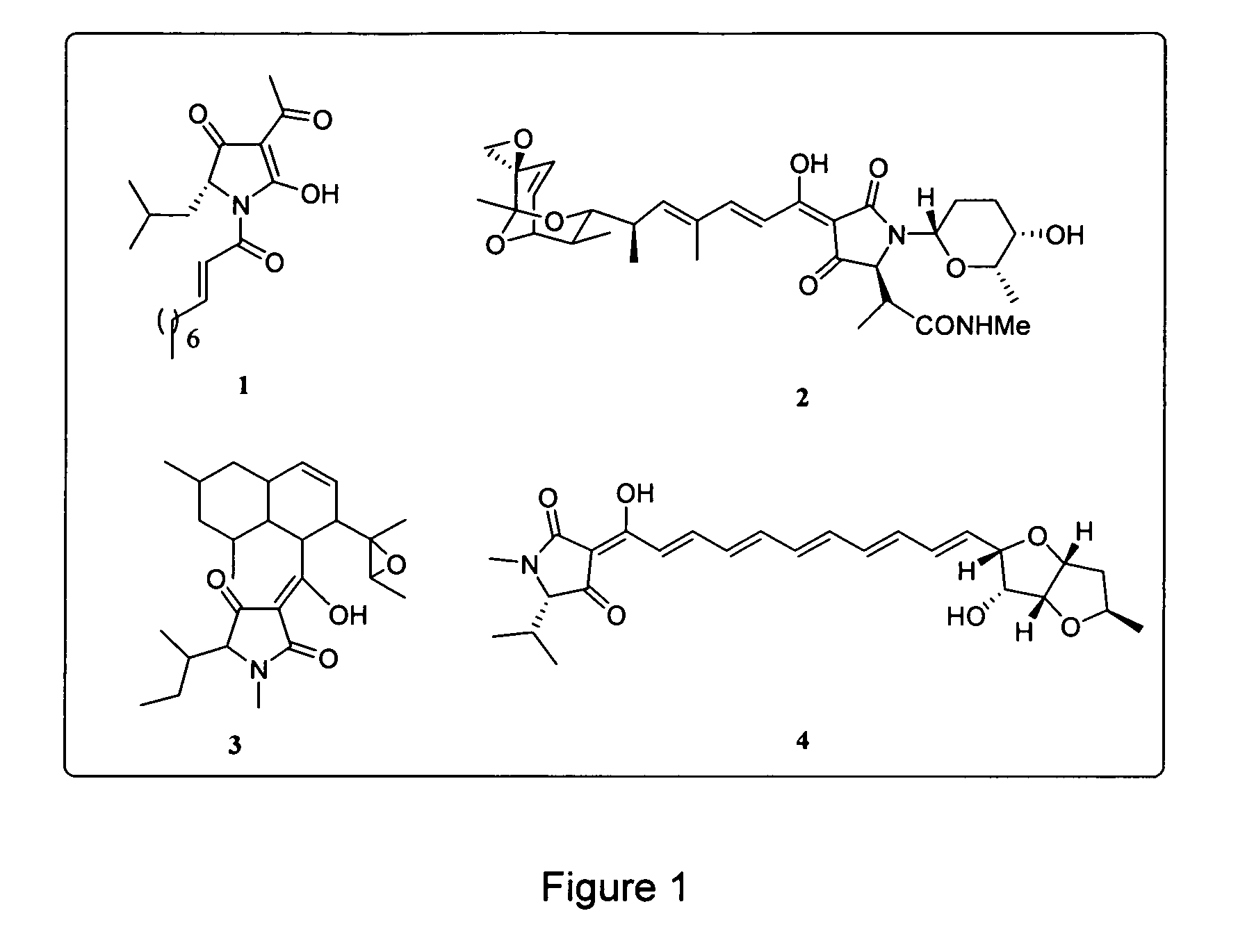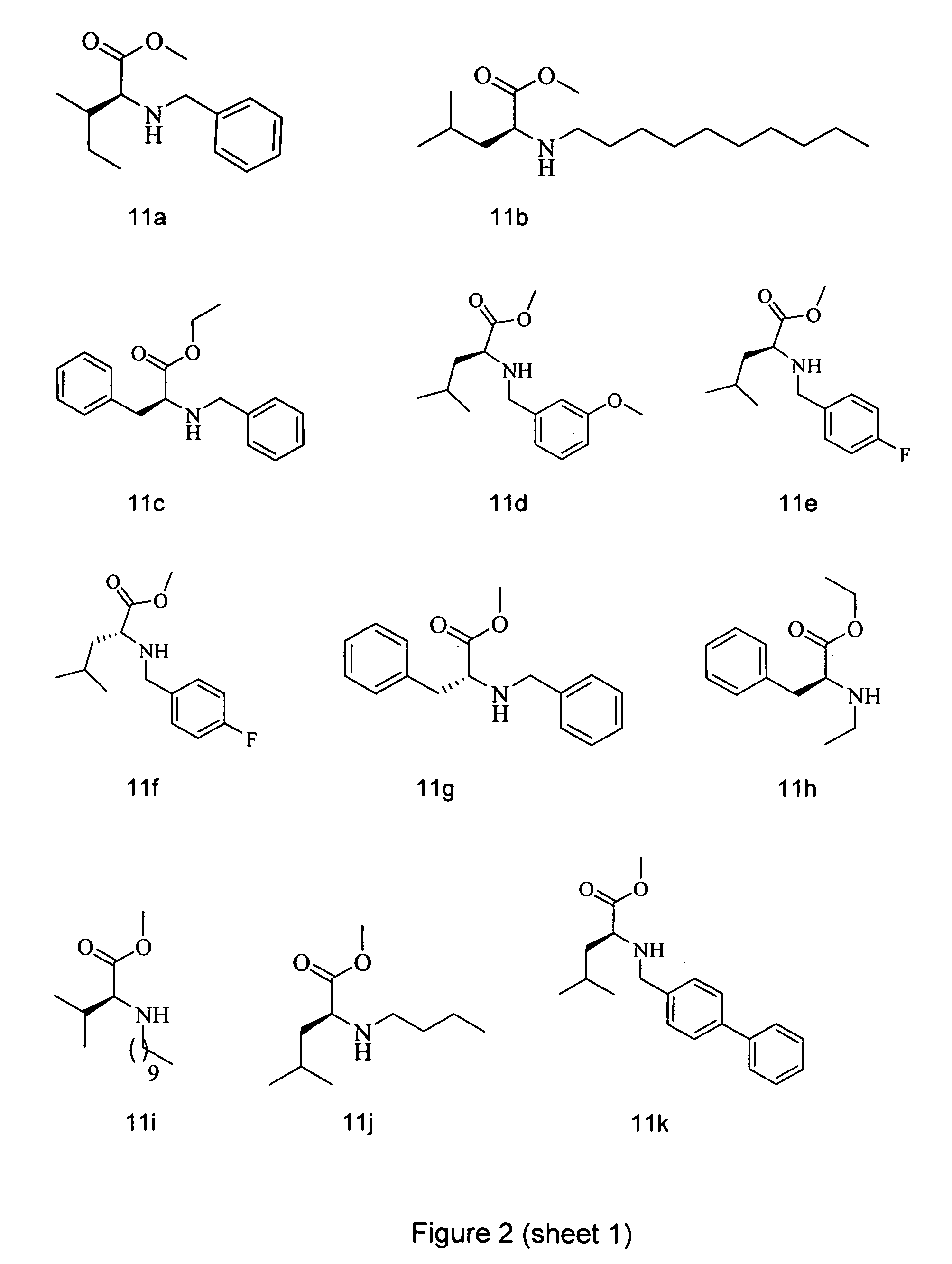Analogs of tetramic acid
a technology of tetramic acid and analogues, applied in the field of chemical compounds, can solve the problems of antibiotic resistance bacteria being a major cause of morbidity and mortality in hospital and community settings, and the inability to effectively treat bacterial infectious diseases through the use of antimicrobial chemotherapy has been severely affected
- Summary
- Abstract
- Description
- Claims
- Application Information
AI Technical Summary
Problems solved by technology
Method used
Image
Examples
example 1
General Procedure for Synthesis of Compounds of Formula I (N-substituted 3-acyl Tetramic Acids)
[0063]Secondary amines (substituted amino acids) obtained by reductive amination were treated with diketene in the presence of catalytic amounts of Et3N to yield respective beta keto amides. These were subsequently converted into the desired N-substituted 3-acyl tetramic acid.
example 1a
General Procedure for Synthesis of Secondary Amines
[0064]To a stirred solution of amino acid HCl salt (1 equiv) in THF was added MgSO4 (1.7 equiv), aldehyde (2 equiv), and Et3N (1 equiv). The reaction was then left to stir at rt under argon for 5 h. The reaction mixture was then filtered and the eluent evaporated to give the crude imine intermediate. The imine was directly redisolved in methanol and sodium borohydride (2 equiv) was slowly added to the reaction mixture. The reaction was stirred at rt for 30 min, before being quenched with excess 1N NaOH and extracted with ethyl acetate. The ethyl acetate extracts were combined, washed with brine, dried over Na2SO4 and concentrated under vacuum. The residue was purified by flash column chromatography using a petroleum ether to ethyl acetate gradient elution to afford pure products.
example 1b
General Procedure for Synthesis of N-Substituted 3-acyl Tetramic Acids
[0065]To a solution of substituted amino acid (1 equiv) in CH2Cl2 was added diketene (1 equiv) or 50% diketene in dichloromethane and Et3N (five drops), which was then heated under reflux for 6 h. The reaction mixture was then cooled, diluted with CH2Cl2 and washed with dilute hydrochloric acid followed by water. The CH2Cl2 fraction was dried over Na2SO4 and concentrated. This was then purified by flash column chromatography using a petroleum ether to ethyl acetate gradient elution to afford the desired intermediate products that were then used directly in the next step. To the solution of amide (1 equiv) in methanol (10 mL) was added Amberlyst A-26 resin (4.2 meq / gm, 3 equiv) and the reaction was stirred at rt under argon for 2 h. The product containing resin was filtered and washed with methanol (3×10 mL). The resin was then stirred for 30 min with methanol (10 mL) and TFA (400 μL), filtered and washed with meth...
PUM
 Login to View More
Login to View More Abstract
Description
Claims
Application Information
 Login to View More
Login to View More - R&D
- Intellectual Property
- Life Sciences
- Materials
- Tech Scout
- Unparalleled Data Quality
- Higher Quality Content
- 60% Fewer Hallucinations
Browse by: Latest US Patents, China's latest patents, Technical Efficacy Thesaurus, Application Domain, Technology Topic, Popular Technical Reports.
© 2025 PatSnap. All rights reserved.Legal|Privacy policy|Modern Slavery Act Transparency Statement|Sitemap|About US| Contact US: help@patsnap.com



